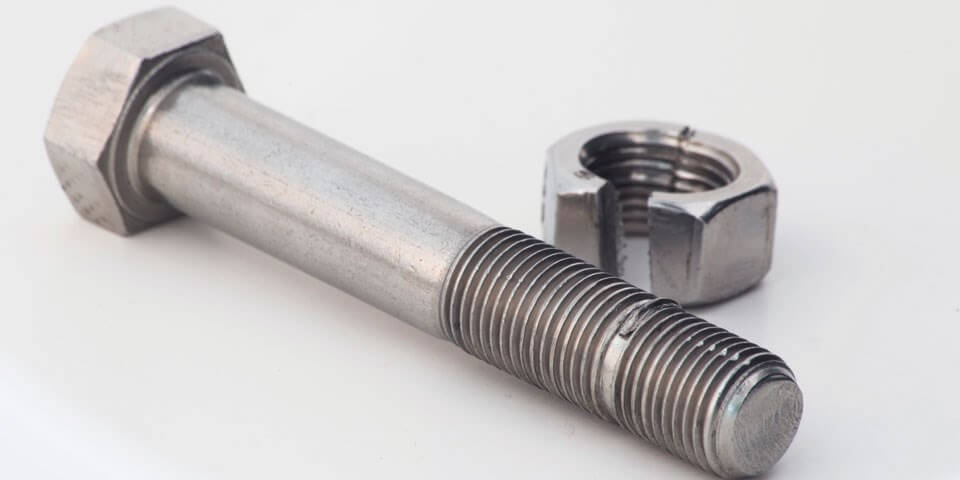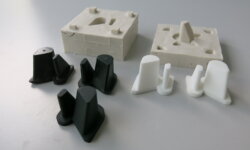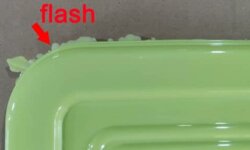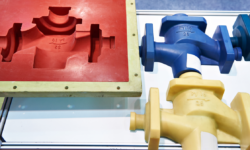Galling is a common problem with metal parts. It happens when two sliding metal surfaces unexpectedly stick to one another, causing frictional damage and ultimately unwanted cold welding.
Most often seen in sliding parts like threads, fasteners, bearings, cylinders, and pistons, galling can also occur during metalworking — when microscopic pieces of the workpiece adhere to a machine cutting tool, for example.
Fortunately, there are several ways to prevent galling, both during manufacture of the metal parts and during their operational life. Material choice, surface treatment, and effective lubrication are some of the best strategies for reducing galling. However, some parts and materials are inherently vulnerable to the problem, limiting their lifespan.
This article looks at some strategies to avoid galling on sliding metal parts, with a particular focus on the manufacturing side: materials, manufacturing processes, and surface treatments.
Why does galling happen?
Galling occurs when sliding surfaces adhere to each other. Friction and adhesion between the two surfaces tears the sub-surface crystal structure of one surface, causing it to transfer to the opposing surface. The visible raised lump that results from the phenomenon is the “gall.”
This phenomenon occurs because even smooth-feeling parts have imperfections — tiny peaks and troughs — at the microscopic scale. The microscopic peaks or asperities of each material make contact, causing friction.
Several factors can exacerbate the severity of galling. They include:
- Inadequate lubrication between the two sliding surfaces
- A combination of high loads and slow sliding speeds
- Use of soft, ductile materials
- Use of materials with passive oxide layer like stainless steel and titanium
- Use of the same material on each surface
- Temperature fluctuations
Galling often occurs with small parts like threaded fasteners. It poses a serious risk in industrial processes if left untreated. Seized threads may lead to the breakage of the fastener or the entire assembly.
The problem of galling can lead to equipment failure and require expensive maintenance, leading to production delays and wasted resources.
Ways to prevent galling
There are several ways to prevent or minimize galling of sliding metal parts. Here we focus mainly on the ways that manufacturers like 3ERP can help prevent galling (materials and production) rather than the ways that part end-users can prevent it (lubrication and maintenance), though both are important.
1. Material selection
Some materials are more prone to galling than others. In general, harder materials are more resistant to galling than softer ones, though other considerations must also be made.
Some of the most galling-prone materials include aluminum, titanium, and austenitic stainless steel. However, these materials are often required due to their other desirable properties, such as strength, corrosion resistance, and machinability. If these materials are not essential, then alternatives like brass, bronze, and cobalt are much better at avoiding galling.
Galling can be less likely to occur if the two sliding surfaces are two different materials, due to their dissimilar atomic structures.
2. Material hardening treatments
As we have discussed, materials with higher work-hardening rates are less prone to galling. Besides material selection, hardness of a material can be improved with certain metal surface treatments.
For stainless steels in particular, methods such as heat treatment, carburizing, and nitriding can all reduce damage caused by galling.[1]
3. Surface roughness treatments
Rough surfaces can exacerbate galling, as the asperities of each surface can become interlocked. On the other hand, very smooth surfaces can also result in galling, as the lack of texture on the surface means that lubricant cannot be captured and kept in place by the material.
The ideal surface roughness to prevent galling is above 0.25 mm Ra and less than 1.5 mm Ra.
Surface finishing treatments such as grinding, polishing, and buffing can be used to reduce the roughness of materials with a surface roughness greater than 1.5 mm Ra, while treatments like coarse abrasive blasting can be used to increase surface roughness (while also masking surface defects).
4. Anti-galling coatings
Parts susceptible to galling can be treated with anti-galling coatings that are formulated to reduce friction. One possible type of coating is tungsten disulfide, which acts as a dry film lubricant. Unlike wet lubricants, which are applied and re-applied before assembly and usage, tungsten disulfide doesn’t attract dirt and debris.
Another option for reducing galling is electroless nickel or chromium plating, which can also improve corrosion resistance. Plating may be particularly effective if applied to just one of the two sliding surfaces.
Another popular anti-galling coating is diamond-like carbon (DLC), which can significantly increase the hardness of the surface a metal part.
5. Part design
Surface pressure can be reduced and galling minimized by increasing the contact area between sliding surfaces. When designing parts, maximize the contact surface area if possible. The design should allow allow for adequate lubrication of the sliding parts — cavities or holes can assist with lubricant retention in the contact zone.
Specifying tolerances is also important during design. Sliding parts should have sufficient clearance to minimize friction while allowing them to function as intended.
6. Lubrication
Effective lubrication is one of the key strategies for preventing galling of sliding metal components. Lubrication reduce friction and contact temperature, also acting as a protective layer between two surfaces.
Common lubricants for preventing galling include specialty anti-galling lubricants, grease, oil, and anti-seize solutions.
Ordering metal parts from 3ERP
3ERP is a trusted provider of metal parts and prototypes using processes like CNC machining, sheet metal fabrication, metal additive manufacturing, aluminum extrusion, and metal casting.
We offer an extremely wide range of material options, as well as surface finishing treatments like bead blasting and chrome plating, helping you develop sliding parts that resist galling and other challenges.
Request a free quote on your next sliding metal parts.
[1] Ives LK, Peterson MB, Whitenton EP. The mechanism, measurement, and influence of properties on the galling of metals. Oak Ridge National Lab.(ORNL), Oak Ridge, TN (United States); National Inst. of Standards and Technology (IMSE), Gaithersburg, MD (USA). Ceramics Div.; 1989 Dec 1.








